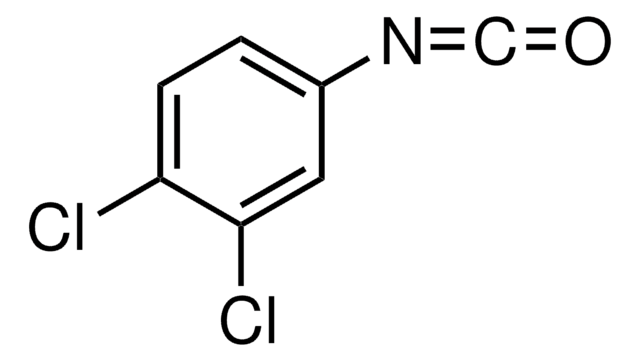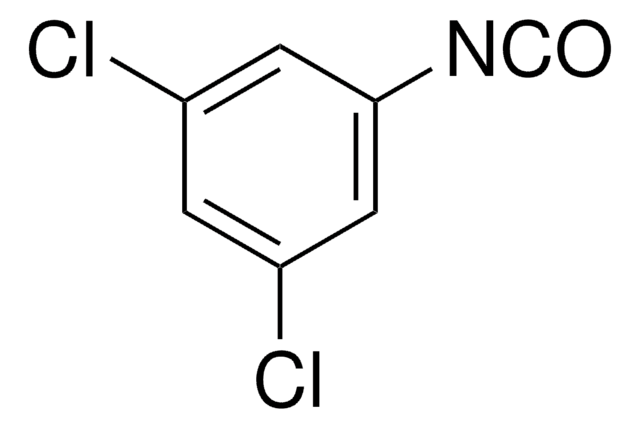437778
3,4-Dichloroaniline
98%
Synonim(y):
3,4-Dichlorobenzenamine, 3,4-Dichlorophenylamine, 4,5-Dichloroaniline, 4-Amino-1,2-dichlorobenzene, m,p-Dichloroaniline
About This Item
Polecane produkty
Próba
98%
tw
272 °C (lit.)
mp
69-71 °C (lit.)
ciąg SMILES
Nc1ccc(Cl)c(Cl)c1
InChI
1S/C6H5Cl2N/c7-5-2-1-4(9)3-6(5)8/h1-3H,9H2
Klucz InChI
SDYWXFYBZPNOFX-UHFFFAOYSA-N
Szukasz podobnych produktów? Odwiedź Przewodnik dotyczący porównywania produktów
Powiązane kategorie
Opis ogólny
Zastosowanie
Hasło ostrzegawcze
Danger
Zwroty wskazujące rodzaj zagrożenia
Zwroty wskazujące środki ostrożności
Klasyfikacja zagrożeń
Acute Tox. 3 Dermal - Acute Tox. 3 Inhalation - Acute Tox. 3 Oral - Aquatic Acute 1 - Aquatic Chronic 1 - Eye Dam. 1 - Skin Sens. 1
Kod klasy składowania
6.1A - Combustible acute toxic Cat. 1 and 2 / very toxic hazardous materials
Klasa zagrożenia wodnego (WGK)
WGK 3
Temperatura zapłonu (°F)
275.0 °F - closed cup
Temperatura zapłonu (°C)
135.00 °C - closed cup
Środki ochrony indywidualnej
Eyeshields, Faceshields, Gloves, type P2 (EN 143) respirator cartridges
Certyfikaty analizy (CoA)
Poszukaj Certyfikaty analizy (CoA), wpisując numer partii/serii produktów. Numery serii i partii można znaleźć na etykiecie produktu po słowach „seria” lub „partia”.
Masz już ten produkt?
Dokumenty związane z niedawno zakupionymi produktami zostały zamieszczone w Bibliotece dokumentów.
Klienci oglądali również te produkty
Nasz zespół naukowców ma doświadczenie we wszystkich obszarach badań, w tym w naukach przyrodniczych, materiałoznawstwie, syntezie chemicznej, chromatografii, analityce i wielu innych dziedzinach.
Skontaktuj się z zespołem ds. pomocy technicznej

















